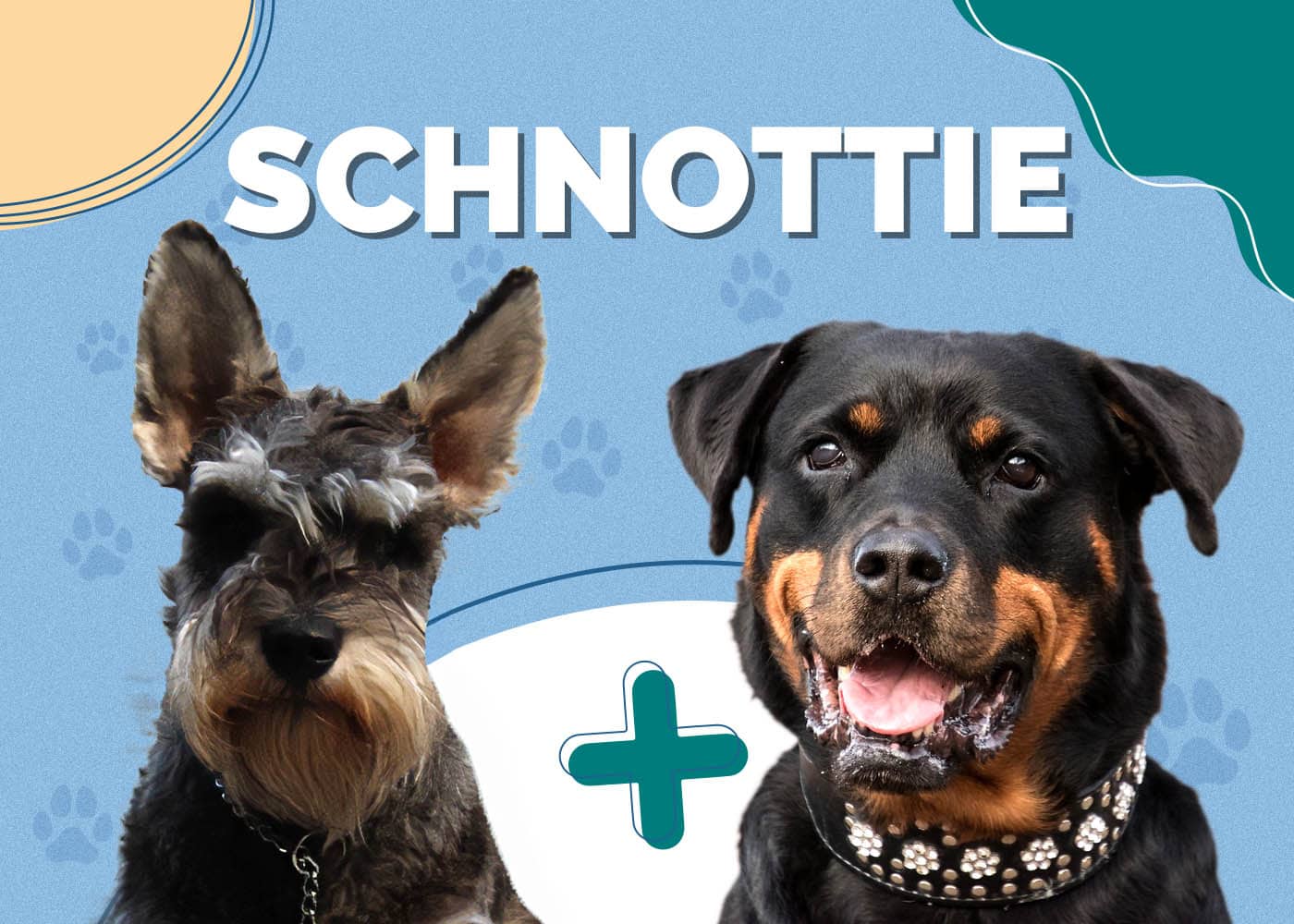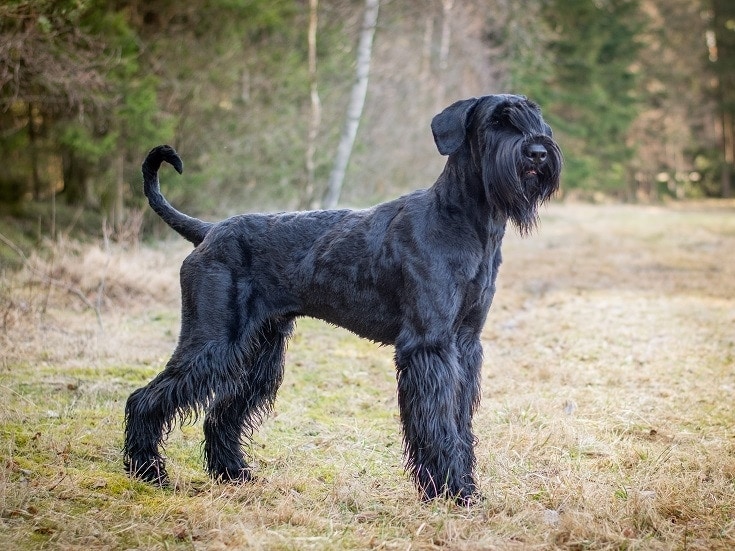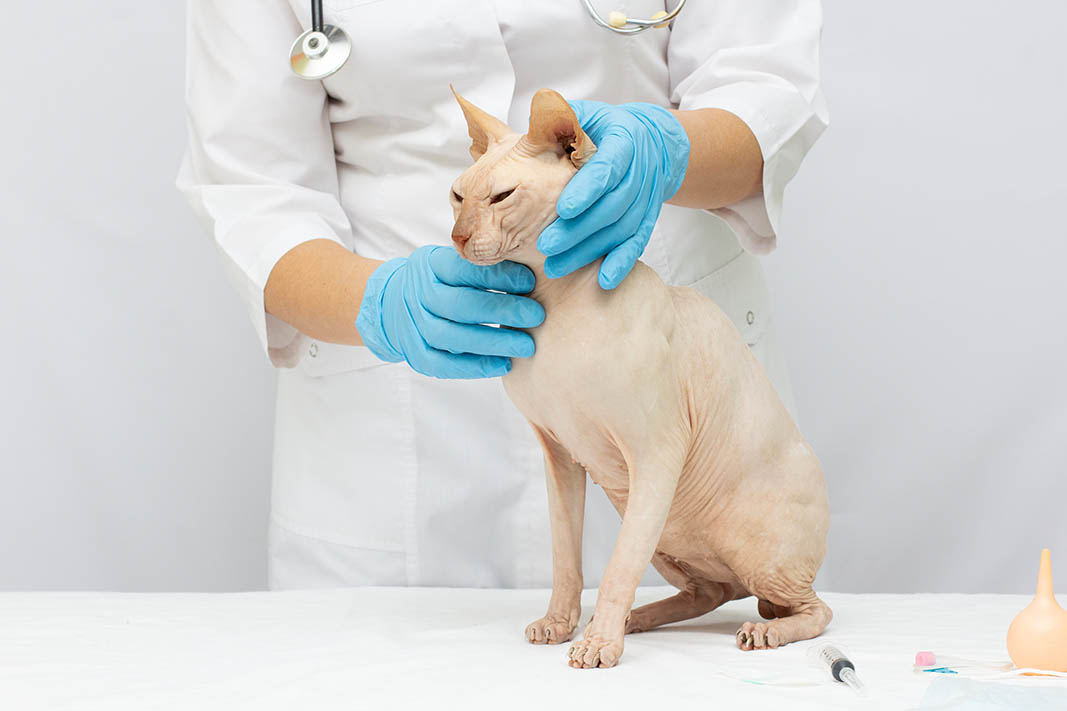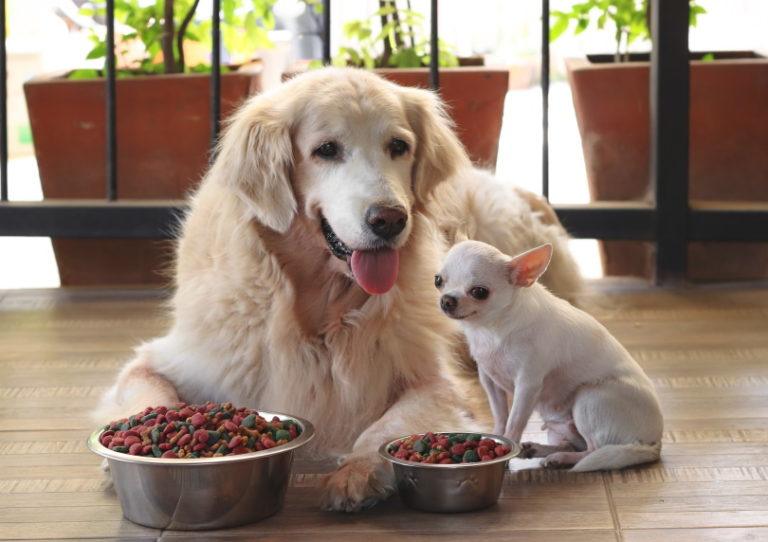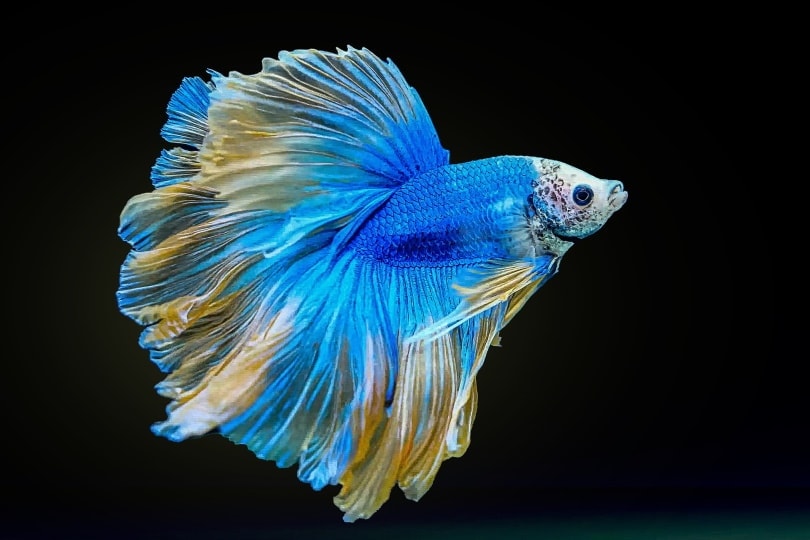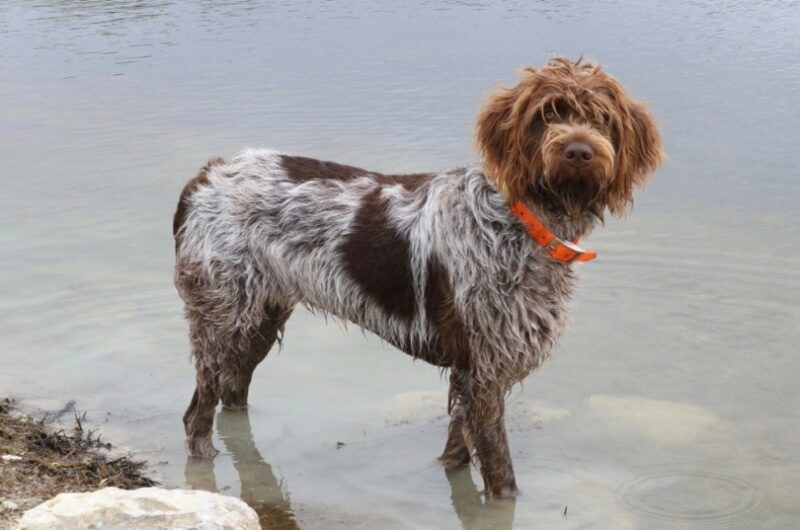Great Danebull (Bull Terrier & Great Dane Mix): Info, Pictures, Traits

Updated on
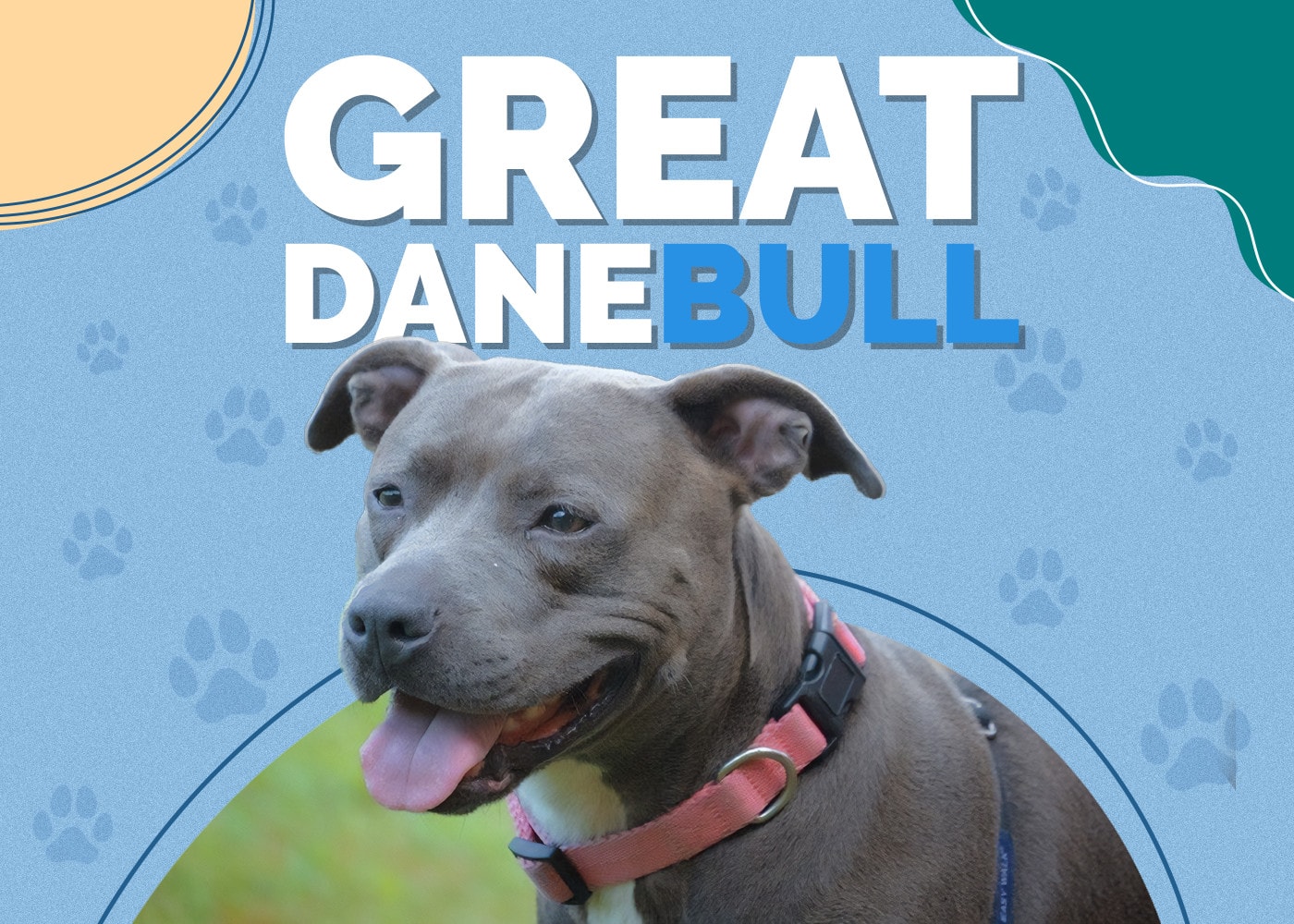
| Height: | 24–28 inches |
| Weight: | 60–90 pounds |
| Lifespan: | 7–12 years |
| Colors: | Black, white, red, blue, brown, grey, chocolate, tan, brindle, sable |
| Suitable for: | Singles or families with enough space for a large dog |
| Temperament: | Friendly, Loving, Affectionate, Goofy, Protector, Intelligent |
The Great Danebull is the offspring of the American Pit Bull Terrier and the Great Dane. Though they are two drastically different breeds, to begin with, when combined, they make beautiful puppies that are excellent pets.
They are very sizable dogs, taking cues from the Great Dane side of the family. But the Pit Bull makes them smaller than purebred Great Danes. They come in various colors and patterns, often having coats resembling a Pit Bull.
Great Danes are low-key dogs that aren’t particularly energetic or active, though the Pit Bull in a Great Danebull increases their activity needs somewhat. Still, they don’t need as much exercise as other large dogs.
The loving and affectionate Great Danebull is about as friendly as a dog can be. Almost too friendly! They’ll get along with everyone, especially if you start socializing them early. Their affection endears many to them, while their goofy personalities make them entertaining.
Great Danebull Puppies
Since Great Danebulls are mixed-breed dogs, they’re not as expensive as other purebred dogs. While both parent breeds are popular as pets, neither is commonly used for show, which helps lower the price of Great Danebull puppies.
The quality of the breeder will have a significant impact on the puppy you receive. If you can, try to meet both parents so you can see how their health is as well as their temperaments. Puppies usually display a mix of traits exhibited by the parents, which can give you insight into what your dog might be like as an adult.
Another alternative to purchasing a Great Danebull puppy from a breeder is to search the local shelters for one to adopt. Adopting a puppy is more economical than buying one, and it also gives a puppy a new chance at a good life.
3 Little-Known Facts About the Great Danebull
1. They’re Gentle Giants
Based on looks alone, the Great Danebull has a somewhat intimidating presence. With an enormous stature and a face similar to a Pit Bull’s, they can instill fear in intruders with just their appearance. But sometimes, appearances can be deceiving!
Though they may look scary, they are incredibly loving creatures. They’re very friendly with everyone and not prone to aggression. They make great pets, developing a very close bond with their person.
However, a Great Danebull can still make a good guard dog. Though they won’t be aggressive towards guests, a Great Danebull will vocalize their displeasure if an unexpected intruder appears, alerting you and the would-be intruder of the potential danger.
2. Most Rental Properties Won’t Accept Them
At least in America, a Great Danebull will likely be turned down at almost all rental properties. Both parents are included on the “dangerous breeds” list that landlords use to determine which pets are eligible for residency.
Of course, as anyone owning either breed can attest, they’re incredibly loving and safe dogs. Regardless, because of appearances and liabilities, you can expect to have a difficult time finding a place to rent if you have a Great Danebull in tow.
3. They’re Prone to Separation Anxiety
Great Danebulls are an incredibly affectionate breed that closely bonds with their family. They have a deep-seated need to please their people, and they need lots of affection and attention to feel they’re an essential part of the family.
Because of their emotional attachment to their owner, Great Danebulls are prone to separation anxiety. They don’t want to be alone all day and prefer to always be by your side. They are best suited for families with ample time to devote to their dogs.
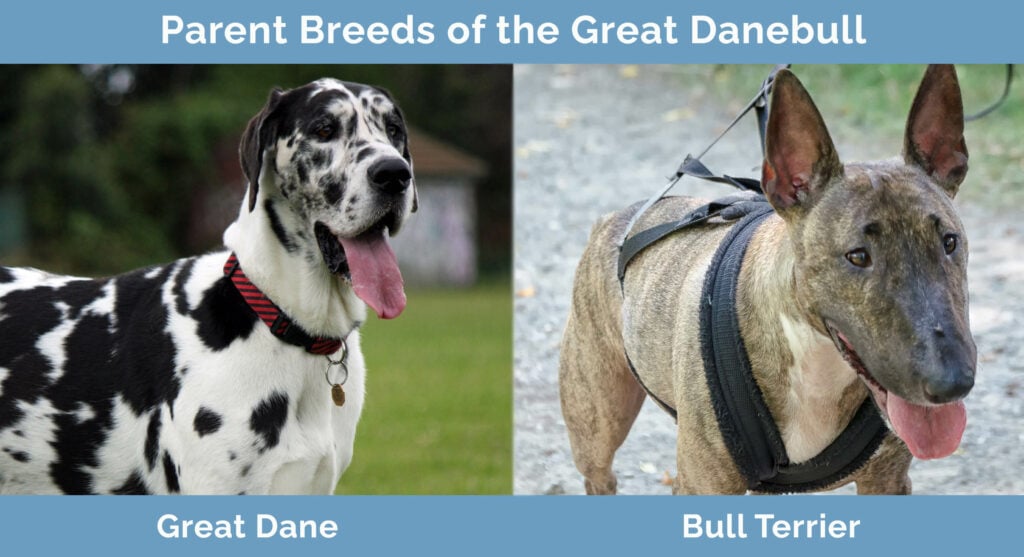
Temperament & Intelligence of the Great Danebull 🧠
Few dogs are more loyal and loving than the Great Danebull. This giant teddy bear is as affectionate as they come, but they are also highly intelligent. They can be easily trained to learn new commands and tricks, which is made even easier by their deep need to please.
Are These Dogs Good for Families? 🏡
Truthfully, few canines make better family dogs than the Great Danebull! These giant sweethearts are incredible with children. They seem to understand that they need to be gentle protectors, and they fill the role perfectly.
If you plan to get a Great Danebull as a guard dog, you should know that they’re friendly with everyone. They’ll get along with any of your guests and generally don’t show any signs of aggression. But if they feel a threat, the inner protector will come out, and they’ll make their displeasure known.
Does This Breed Get Along with Other Pets? 🐶 😽
Since they’re so affectionate, Great Danebulls tend to do very well with other pets. Though they are large dogs, they don’t have a strong prey drive, so they get along well with smaller animals. They’ve even been known to do fine with cats. Make sure to socialize your Great Danebull early, and they should get along with everyone!
Things to Know When Owning a Great Danebull:
Food & Diet Requirements 🦴
Great Danebulls can be as tall as 28 inches and weigh nearly 100 pounds. Naturally, a dog that size will require a lot of food. You can reasonably expect to feed your Great Danebull about four cups of dry dog food daily.
Compared to other dogs, even large dogs, that’s a lot of food. Don’t be surprised if you spend $60–$100 monthly on dog food alone.
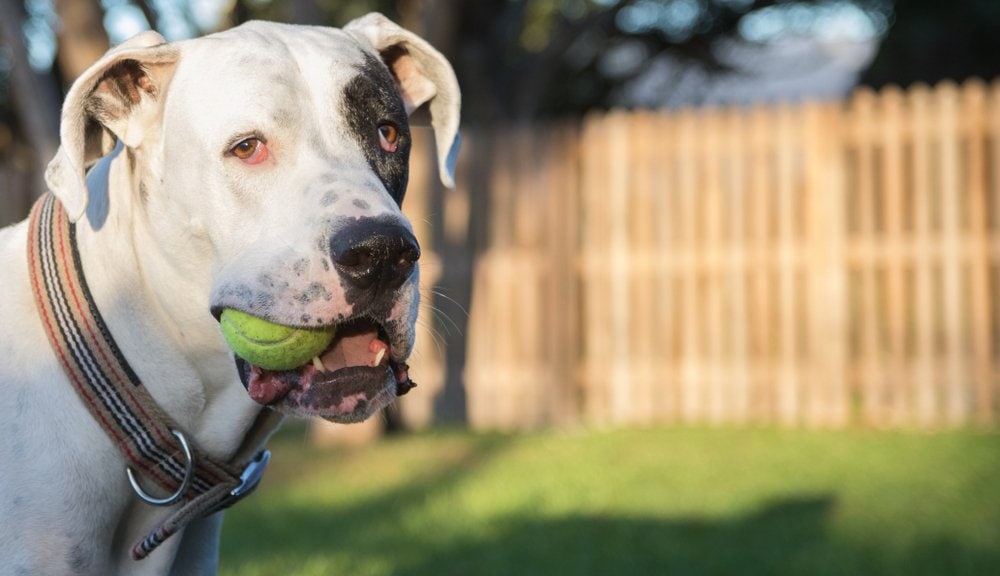
Exercise 🐕
You might think that a dog of this size would need a lot of exercise, but surprisingly, the Great Danebull doesn’t need much. About 30 to 40 minutes of activity each day should suffice. A short walk or a little structured playtime should be fine.
Aside from that, your Great Danebull will need a lot of space to stretch their legs. Though they’re not energetic dogs, they’re still enormous and need more room than an apartment might provide.
Training 🦮
Because they’re such intelligent dogs with a strong desire to please, Great Danebulls learn very quickly. They can pick up commands and tricks with positive reinforcement. In fact, they respond incredibly well to obedience training, which will help strengthen their bond with you.
Grooming ✂️
The Great Danebull isn’t known to be a heavy shedder, but they shed moderately throughout the year. They won’t require much grooming in general, but an occasional light brushing should take care of the dead hair in their coat.
Aside from brushing, bathing needs for the Great Danebull are minimal. You shouldn’t need to clean them more than once a month, though they’ll need regular teeth cleaning and nail trimming.
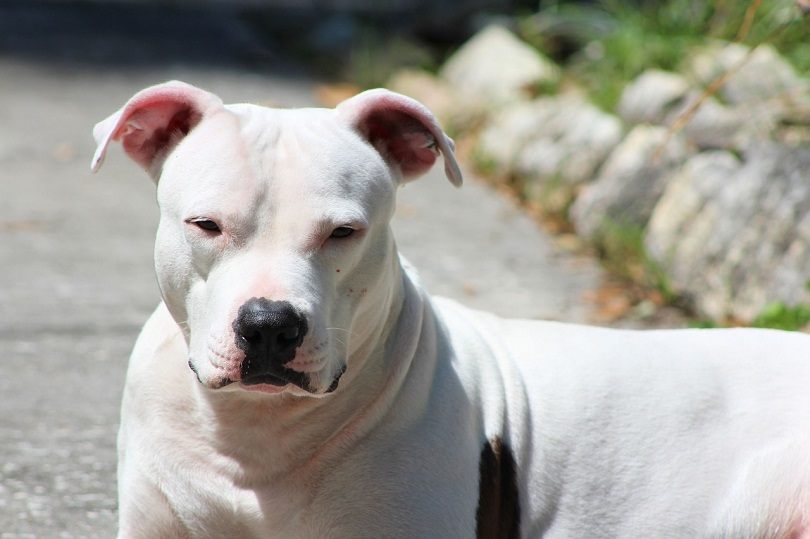
Health and Conditions ❤️
One of the advantages of mixed-breed dogs over purebred ones is that they may have a reduced risk of health concerns that are known to affect the parents. However, they can still occasionally exhibit the same types of adverse health conditions, so it’s good to be aware of them.
Hip dysplasia is a disease affecting large dogs, such as the Great Dane. It causes the hip to malform, so it doesn’t fit properly in the socket. As the dog ages, this condition worsens, resulting in pain and loss of motion.
- Allergies
- Hip dysplasia
 Male vs Female
Male vs Female
Like many other canines, Great Danebulls have a size discrepancy between males and females. Generally, female Great Danebulls are 24 to 26 tall, while male Great Danebulls are often 26 to 28 inches tall. Likewise, the males are generally heavier, weighing 70 to 90 pounds, while females usually fall between 60 and 85 pounds.

Final Thoughts
Giant as they are, Great Danebulls are one of the most affectionate and friendly dogs. They make incredible partners, bonding closely with their people. Because of their high levels of intelligence, they are easy to train, and they have a deep desire to please.
They’re well-behaved around kids and pets and are perfect pets for families. If you’re looking for a pet that can truly be man’s best friend, the Great Danebull is undoubtedly a dog worth checking out.
Related Read:
- Best Dog Crates For Separation Anxiety – Reviews & Guide
- Best Dog Foods for Great Danes – Reviews & Top Picks
Featured Image Credit: mtajmr, Pixabay


 Male vs Female
Male vs Female